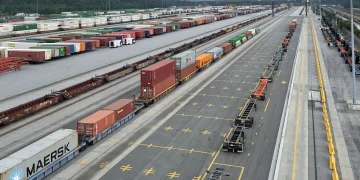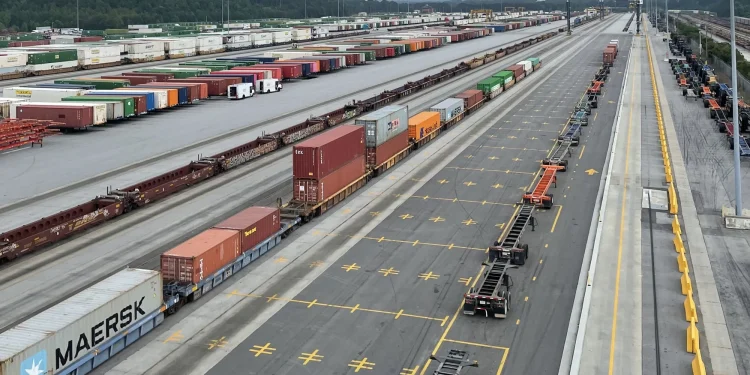By Maria Kalamatas | August 7, 2025
Milwaukee, August 7 —
At a time when many logistics managers are just starting to plan for peak season, Schneider National has already made its move. The trucking and intermodal giant began applying surcharges this week on several inland routes — a sign that volume pressure is arriving sooner than expected.
The affected corridors include routes linking Chicago to Dallas and Kansas City, areas that have seen a steady climb in container flow since mid-July.
“It’s not a spike — it’s a slow build-up,” said a Schneider operations supervisor in Joliet, speaking under condition of anonymity. “We’re responding before it gets too tight.”
❚ Retailers aren’t waiting
Several national chains reportedly advanced their fall imports to avoid potential delays at coastal ports. Those goods are now pushing inland by rail, crowding terminals and creating new challenges for intermodal providers.
A rail operator in Memphis confirmed that daily traffic was already 12% above normal for early August, especially from West Coast gateways.
“Retailers want to be ready by October,” explained Brian Stokes, a third-party logistics broker in Missouri. “That means inland networks feel the strain much earlier.”
❚ What the surcharges look like
Schneider’s added fees vary by lane but typically range between $200 and $350 per container, depending on region and demand. While larger accounts may negotiate partial relief, smaller shippers are left with limited alternatives.
Some customers are shifting part of their loads back to full truckload to maintain flexibility, though options there are shrinking too.
“Intermodal was supposed to be our stable solution,” said Patricia Long, logistics manager at a regional auto parts distributor. “Now even that comes with a premium.”
❚ No signs of slowing
Though other carriers haven’t yet matched Schneider’s move, conversations are already underway. If inland congestion keeps rising, more providers could follow suit by the end of the month.
In the words of one industry analyst: “This might be the first domino — not the last.”























